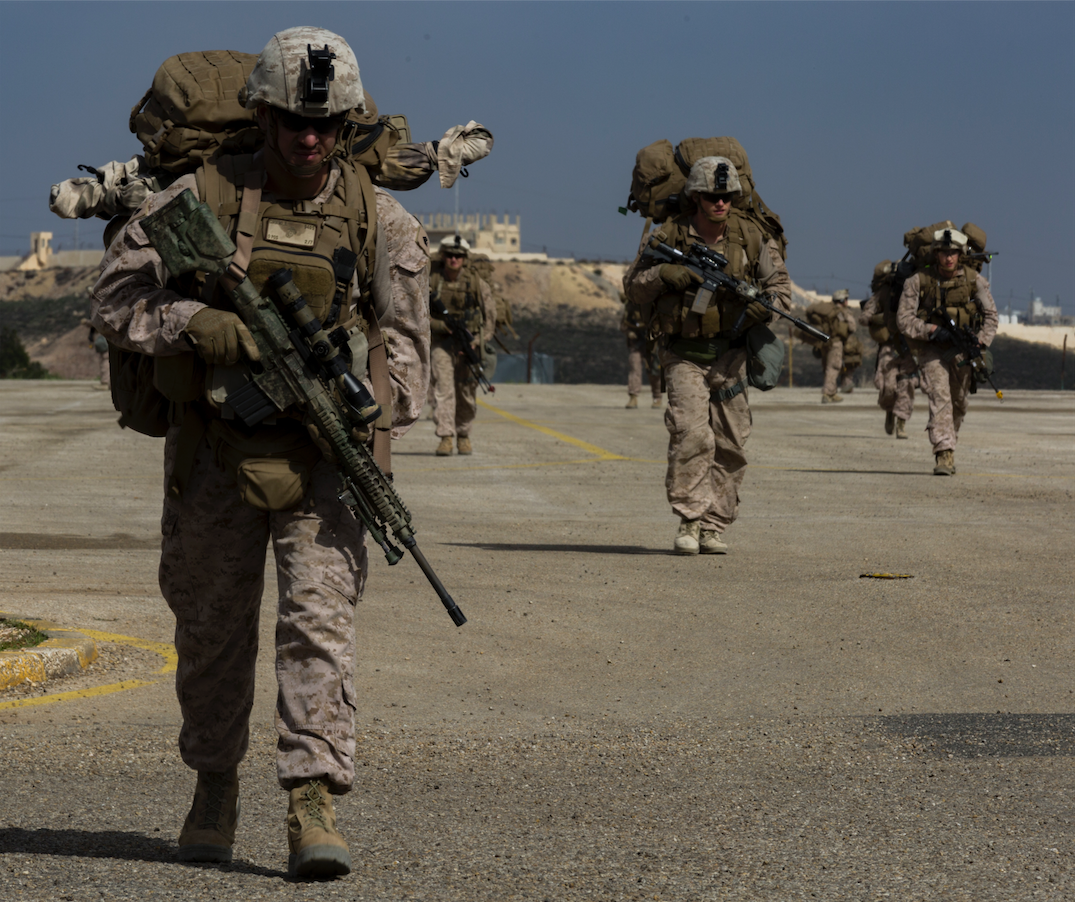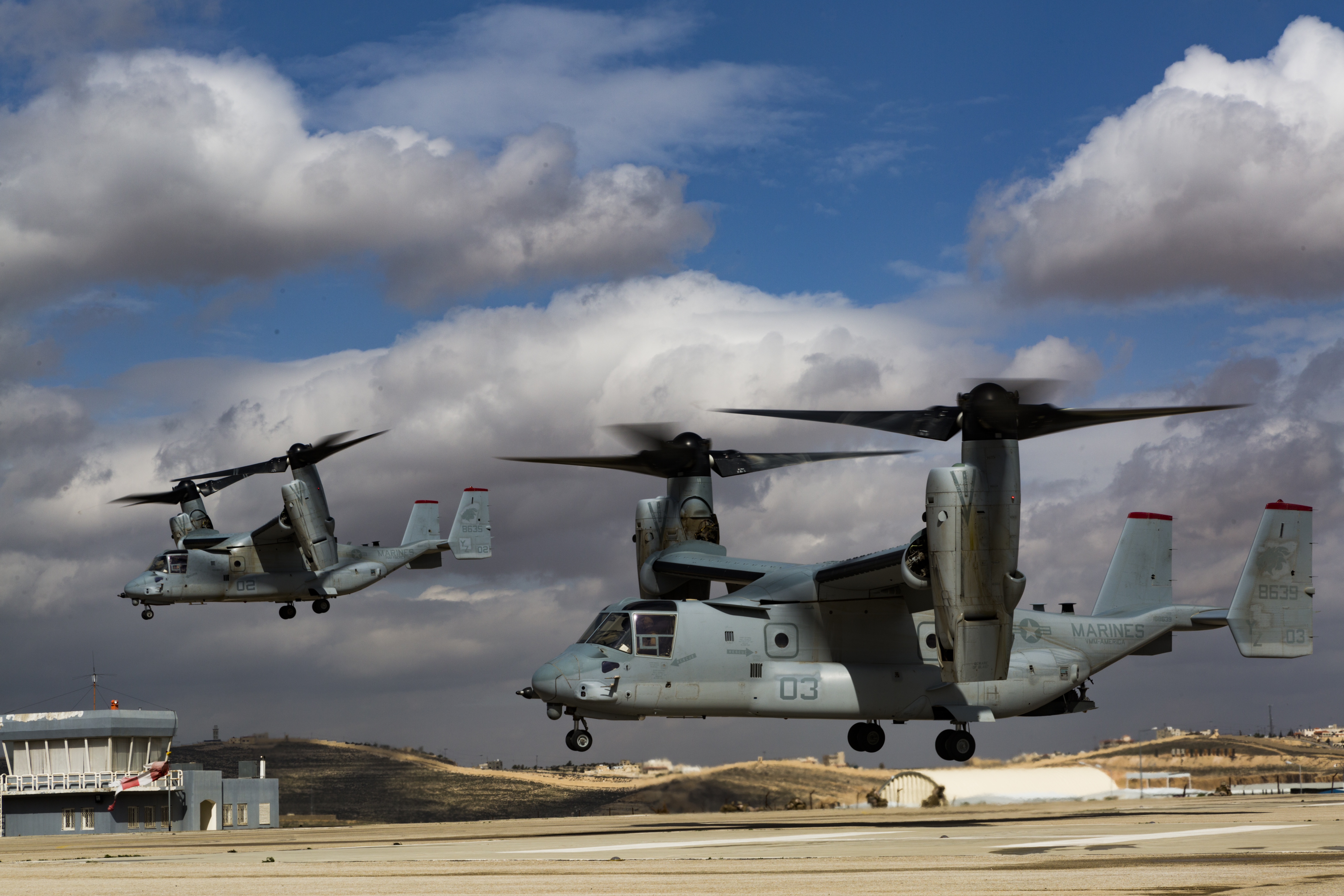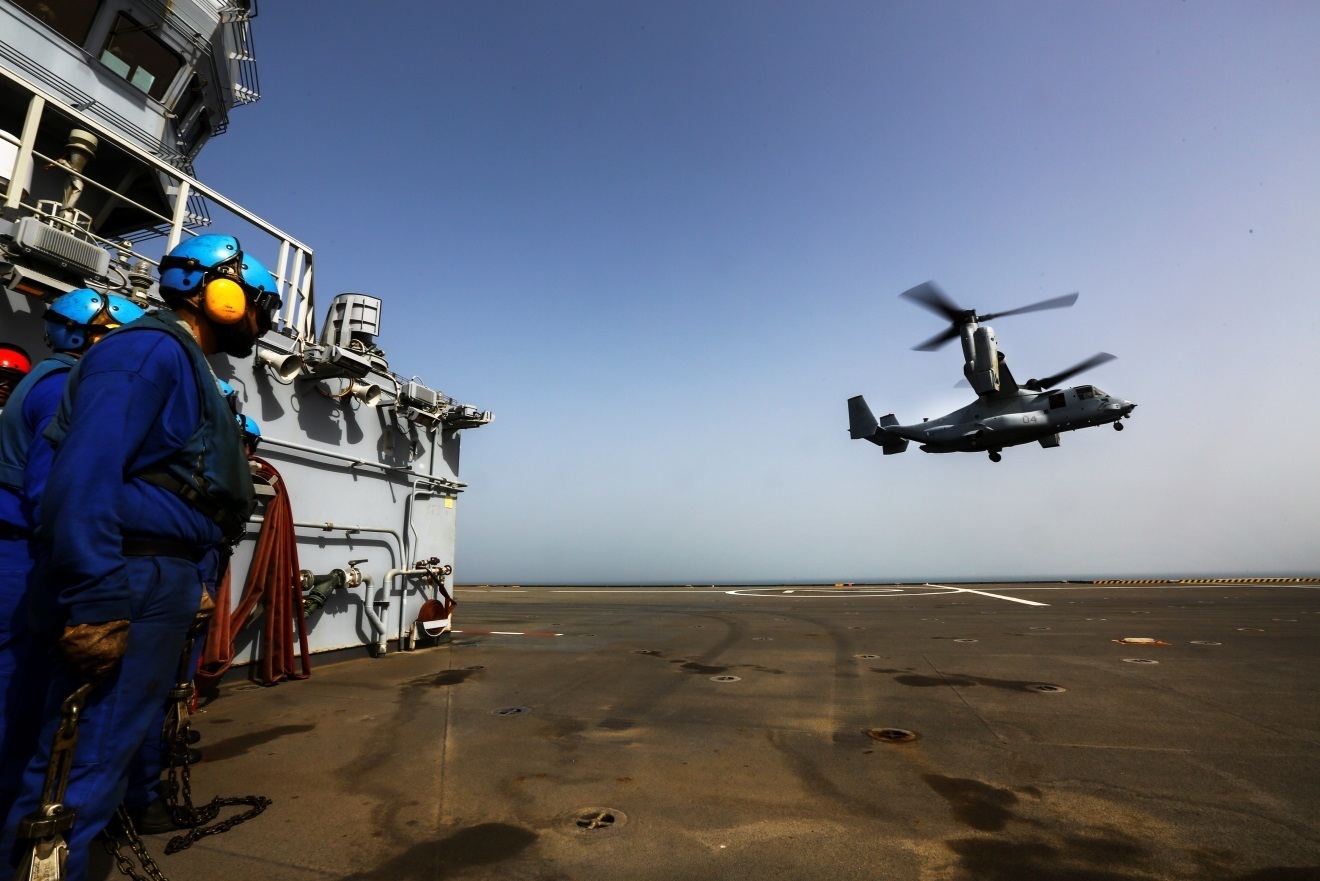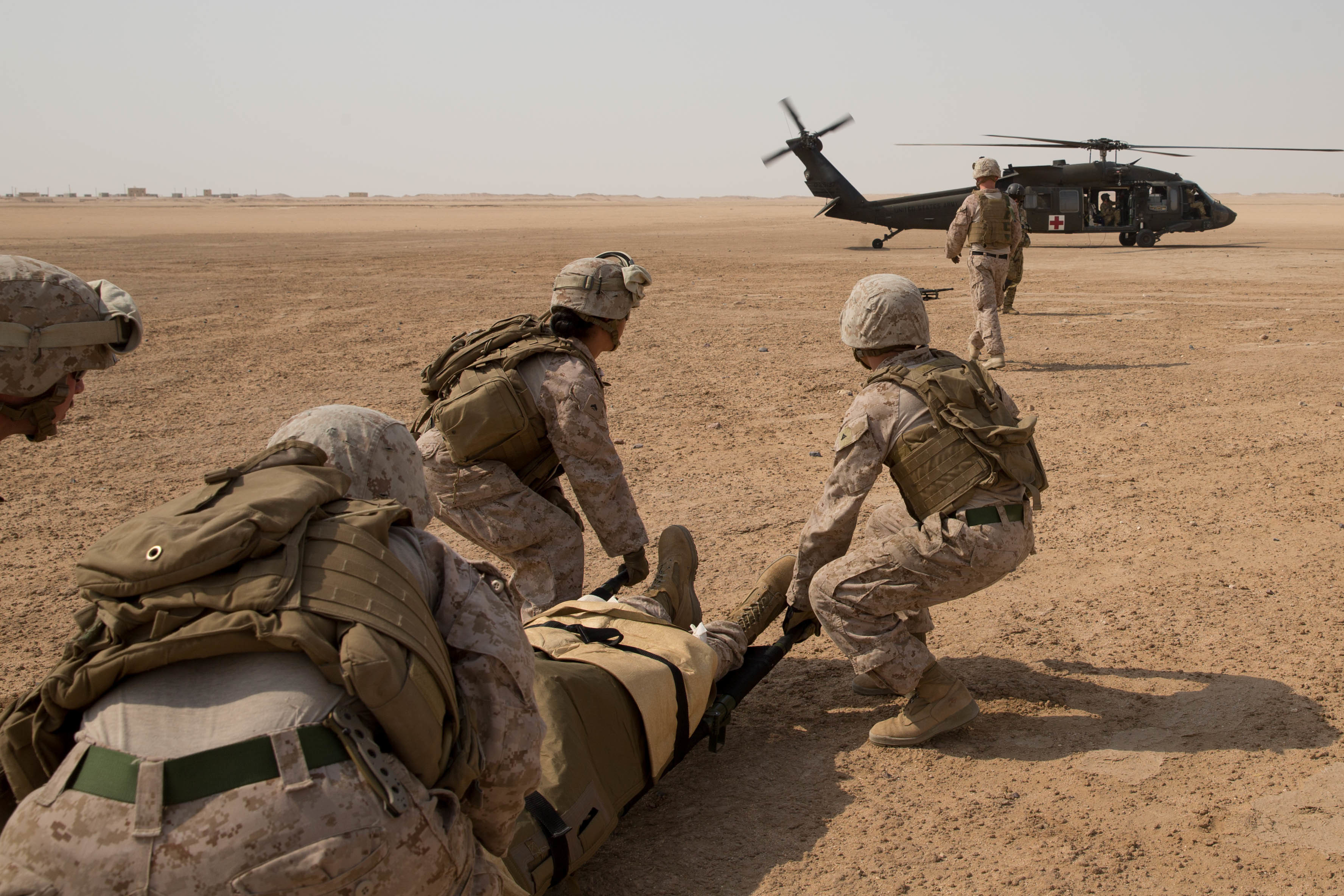
ARLINGTON, Va. — The Marine Corps’ Special Purpose Marine Air-Ground Task Force (MAGTF) Crisis Response force in U.S. Central Command is becoming increasingly distributed across the Middle East as its role evolves, but it is gaining additional aircraft and a ship it can call upon to help support its vastly spread out operations.
Though the SP-MAGTF-CR-CC was created to, as its name suggests, serve as a crisis response force in CENTCOM, Col. Christopher Gideons, who commanded the last rotational force in that role, said CENTCOM is increasingly tasking the 2,000-man SP-MAGTF to send out small units to support named contingency operations like Operation Inherent Resolve and Operation Freedom’s Sentinel.
“While crisis response was our reason for being, it was why we were stood up, really our focus and main effort over the course of our deployment was really more support to contingency operations. That’s where the bulk of our capability was pulled in in support of initial operations in Iraq and Syria, and then later we started to support operations in Afghanistan,” Gideons said Friday at a Potomac Institute returning commanders series event.
Gideons, the 1st Marine Regiment commanding officer, led the SP-MAGTF-CR-CC from August 2017 until April 2018. He said his rotation – dubbed 17.2, or the second 2017 rotational unit – was the most distributed SP-MAGTF to date, at one point in time having forces operating in 24 separate locations in 10 countries, from Egypt to Afghanistan. Units ranged from a two- or three-man explosive ordnance disposal (EOD) detachment support special operations forces to a reinforced rifle company operating in Afghanistan.

“I didn’t own missions in Iraq or Syria, I didn’t own the mission. But I had capabilities that could augment and support that mission’s successful accomplishment that we could provide not at a detriment to our standing requirement of crisis response,” he said.
Part of the reason for the SP-MAGTF being stretched geographically was the lack of a Marine Expeditionary Unit (MEU) embarked on a three-ship Amphibious Ready Group (ARG) in CENTCOM for about 100 days of the 243 days Gideons’ command element spent in theater. Without afloat Marines for CENTCOM to stage strategically where tensions may be rising, CENTCOM turned to the next-best thing: the shore-based SP-MAGTF that was required to be ready to respond to any tasking in the combatant command’s area of responsibility within six hours.
To add some flexibility to this situation, Gideons said the SP-MAGTF turned to expeditionary sea base USS Lewis B. Puller (ESB-3). The Marines and their MV-22 Ospreys used the ship once for training and once for contingency operations, with Gideons saying Puller’s presence “creates opportunity as we see, at times, a deficit in available L-class shipping.” Though he stressed the ground-based MAGTF episodically embarking on Puller did not make up for having an ARG/MEU team in theater, he said it presented an exciting opportunity to mitigate any ARG/MEU gaps as they arise.

Asked if CENTCOM was ready to commit to a formal teaming arrangement between the rotational SP-MAGTF units and Puller, Gideons noted that both are controlled by Brig. Gen. Frank Donovan, commander of the uniquely integrated Naval Amphibious Force, Task Force 51/5th Marine Expeditionary Brigade (TF 51/5). With his CTF-51 hat, Donovan controls Puller and any ARG/MEUs operating in CENTCOM. As commanding general of 5th MEB he controls Marine forces ashore in CENTCOM, including the SP-MAGTF-CR-CC.
“He’s the nexus between the afloat MEU and the ashore MAGTF,” Gideons said.
“So it’s a very powerful headquarters – if you think about it, the ability to integrate and move MAGTF capability between two different kinds of MAGTFs (afloat and ashore). So that’s how we would (further that relationship). Through him, access is easy to the Puller – really, his tasking.”
The next rotation of the SP-MAGTF, which will be supported by the 5th Marine Regiment, will not only further learn how to leverage Puller, it will also have twice as many Ospreys to help support the distributed operations. The Marine Corps had previously trimmed the amount of aircraft allocated to SP-MAGTF-CR-CC due to aviation readiness challenges. Gideons said that while he only had half a V-22 squadron – six aircraft – the next rotation would go back to the full squadron of 12 Ospreys.
He said his squadron’s maintenance department could usually keep about four of the six aircraft up, a rate that is “pretty flippin’ good, when with the Osprey we’re kind of averaging around 50 percent generally.” Still, with trying to operate across such a geographically vast area, twice the aircraft will be very useful going forward.
During the eight-month deployment, Gideons oversaw the drawdown of some missions, such as a 100-Marine plus-up in security forces at the U.S. embassy in Baghdad, which allowed the SP-MAGTF to “recoup and reinvest” those forces elsewhere, such as with special operations forces in Syria or to provide security for U.S. teams training Afghan security forces in Helmand Province.
The SP-MAGTF’s presence in Syria grew from a platoon to two rifle companies (minus), which were integrated with special operations force (SOF) units to provide infantry, indirect fires, anti-tank fires, signal support, engineers, medical, information operations and other enabling capabilities. In Syria, Iraq and Afghanistan, SOF units tended to support local security forces fighting the Islamic State or other terrorist organizations, and SP-MAGTF units of varying sizes provided security or enablers for those SOF units.
Marine Corps leaders said last week that resources may be taken from units less critical to the priorities in the National Defense Strategy – such as the SP-MAGTF-CR-CC, which supports counter-terrorism missions primarily – and reinvested in higher priority missions such as home-based training for high-end warfare and preparation to serve as a surge force, if called upon to surge in a fight in Europe or the Pacific.

Still, in the short-term, more resources are heading to the SP-MAGTF-CR-CC in the way of a full squadron of V-22s, and Gideons said the unit proved itself more than valuable to local commanders.
“I really saw our role as being able to weight the combatant commander’s main effort with MAGTF capabilities and be able to move those fairly adeptly across the theater. And so initially it was all about Iraq and Syria, and towards the end we started flowing more and more to Afghanistan as [CENTCOM commander Gen. Joseph] Votel started to shift his focus away from Iraq and Syria and more of CENTCOM’s resources going to Afghanistan and that fight,” Gideons said.
“And so I see the SP-MAGTF as much as a combatant commander swing force, almost a theater reserve, as much as a crisis response force. We’ll keep that in name, but that’s really the mindset.”





